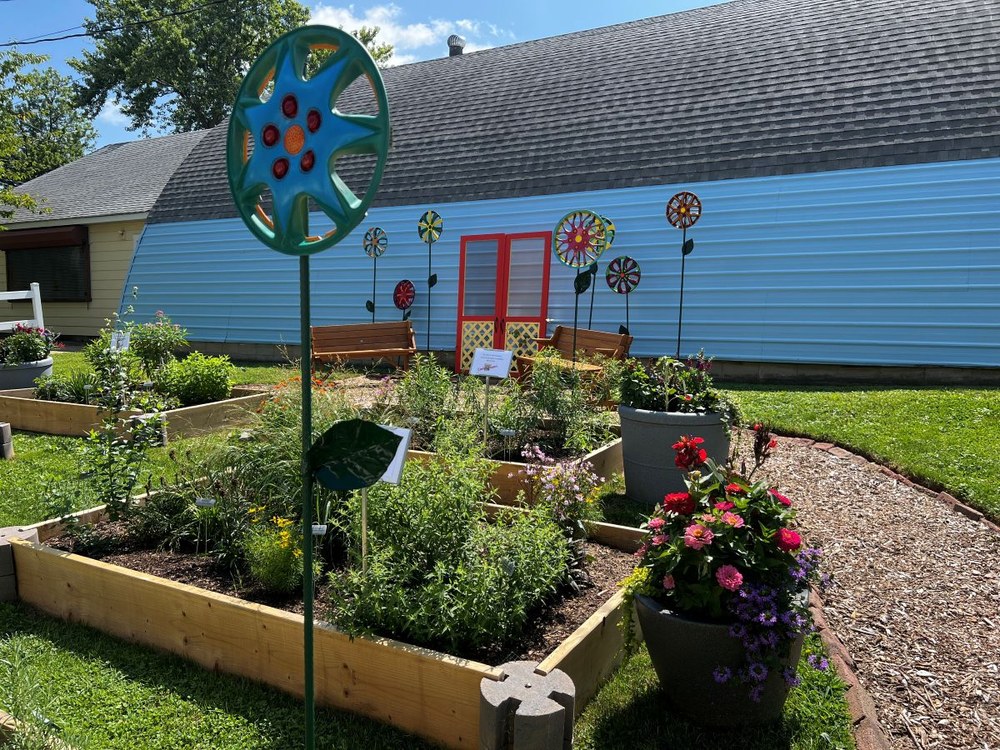The Garden at the Middletown Grange is designed for both education and relaxation, featuring native and pollinator-friendly plantings, a Little Library, and both resting and picnic benches.

The colorful Grange demo garden; Photo credit: Susan Supernavage
Address: 576 Penns Park Rd, Newtown, PA 18940. The garden is located on the grounds of the Middletown Grange at the Penn State Extension Office.
Hours: The garden is visible dawn to dusk year round.
Established: 2023
Type of garden: Native plants, pollinator-friendly plants, herbs, and large decorative container plantings.
Volunteers maintaining the garden: Eight to Ten Master Gardeners
List of Plants: A QR code is posted in each raised bed that links to plant information for that bed.
Description of the garden:
The Garden at the Middletown Grange is designed to educate the public on the use of native and pollinator-friendly plants to attract beneficial insects, butterflies, and birds. It is also a place for rest and relaxation with benches that can be flipped into picnic tables.
We have a Little Library with gardening books. In 2025, we will be focusing one of our two herb beds on herbs that can be used for tea.
The garden’s location offers easy access and additional fun activities. The Wrightstown Farmers Market is held at the Middletown Grange every Saturday from May until October. Shop at the market, then visit our garden just steps away. There is also a children’s playground on the premises and the Grange Fair is held annually in August.
If you are in the area, stop by to enjoy your lunch or relax and listen to the birds. We invite you to check out our plant information using the QR codes and take snips from the garden’s many herb plants with you.

